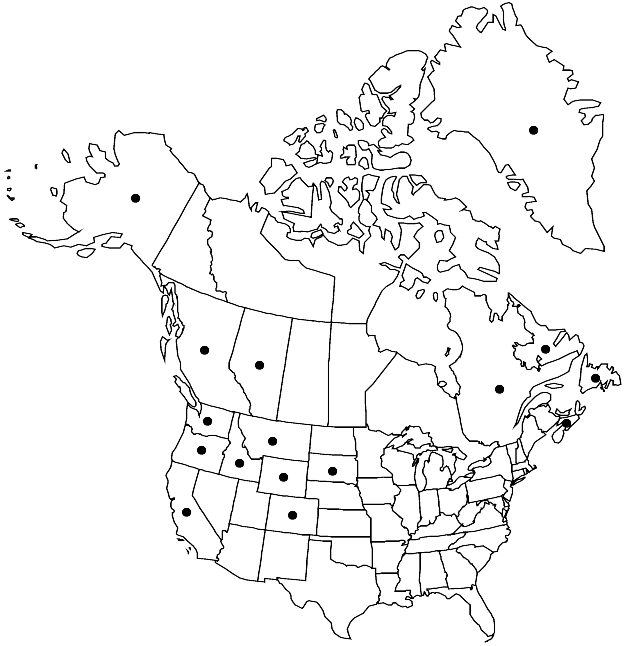Brachythecium albicans
in P. Bruch and W. P. Schimper, Bryol. Europ. 6: 23. 1853.
Plants large, occasionally quite small, in loose to moderately dense mats, usually pale stramineous, occasionally light green, very rarely deep green. Stems to 10(–16) cm, creeping to ascending, terete-foliate, irregularly pinnate, branches to 8 mm, straight to flexuose, terete-foliate. Stem leaves erect- appressed, straight or slightly falcate, closely imbricate, ovate-lanceolate, broadest at 1/7–1/5 leaf length, concave, not or slightly plicate, (1.3–)1.7–2.8 × (0.4–)0.6–1.1 mm; base tapered, broadly or occasionally narrowly long-decurrent; margins plane or often recurved almost throughout, entire, rarely serrulate; apex gradually tapered to acumen, acumen long; costa to 40–70% leaf length, slender, terminal spine absent; alar cells subquadrate to short-rectangular, small, 15–30 × 11–15 µm, walls moderately thick, region extensive, of 10–15 × 6–8 cells; laminal cells linear, 40–100(–125) × 5–9 µm; basal cells 10–15 µm wide, region in 3 rows. Branch leaves similar, smaller. Sexual condition dioicous. Seta reddish orange, 1–2 cm, smooth. Capsule inclined to horizontal, reddish orange, elongate, curved, 2 mm; annulus separating by fragments; operculum long-conic. Spores dimorphic: 15–18 µm or 11–13 µm; these two types are in proportion 1:1, as tetrads have two big and two small spores.
Habitat: Soil, sandy, open and grassy places, rock
Elevation: low to high elevations (0-3600 m)
Distribution

Greenland, Alta., B.C., Nfld. and Labr., N.S., Que., Alaska, Calif., Colo., Idaho, Mont., Oreg., S.Dak., Wash., Wyo., Mexico (Nuevo León), South America, Europe, n Asia, Atlantic Islands, Pacific Islands (New Zealand), Australia.
Discussion
Despite numerous records and misidentified herbarium collections from many of the states, Brachythecium albicans is common only in the Pacific coast region and the mountains of the West. The species is distinguished by the pale color, julaceous foliage, filiform and somewhat secund acumina, entire leaf margins that are often recurved along most of the leaf length, and elongate alar region. This species is variable, often producing very thin shoots, with stem leaves as small as 1.3 × 0.4 mm, but usually such collections include some larger shoots that imply more typical B. albicans. Branches of specimens from California can be as long as 18 mm. Differentiation from the Arctic 15. B. coruscum is discussed under that species. The name B. albicans is used, despite preliminary molecular data that demonstrate differences between American and northeastern Asian populations from European plants; if further study proves that they are not conspecific, then the name B. pseudoalbicans should be used for at least the populations from western North America.
Selected References
None.